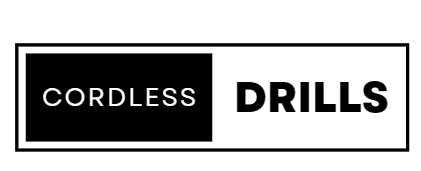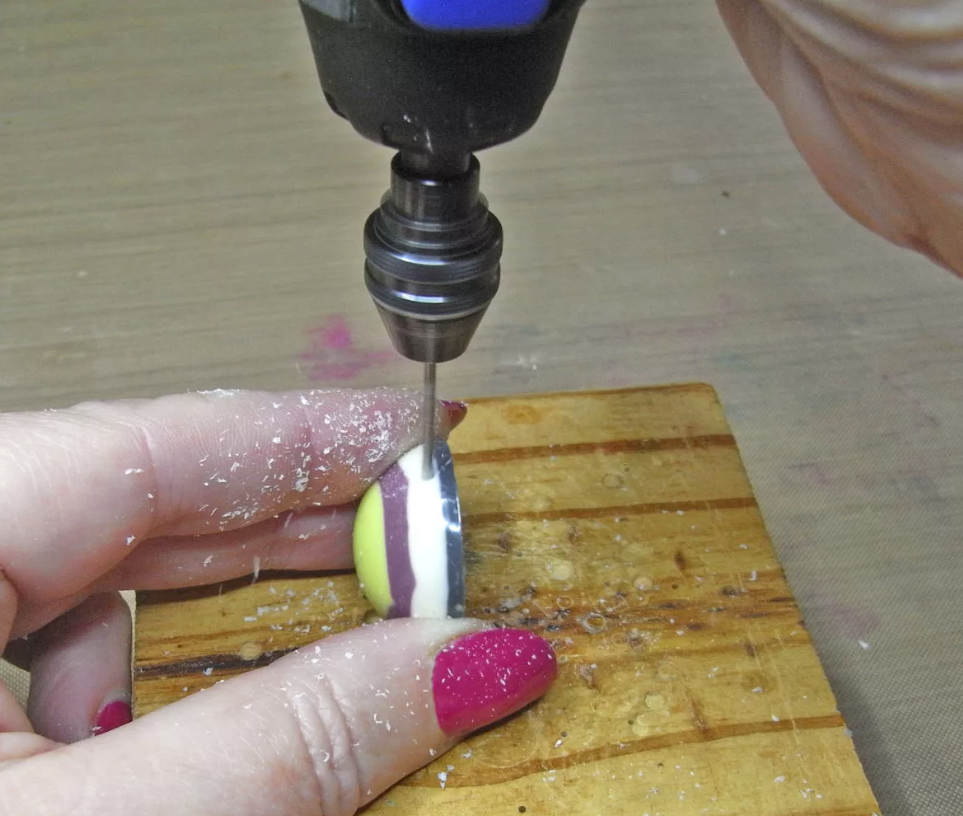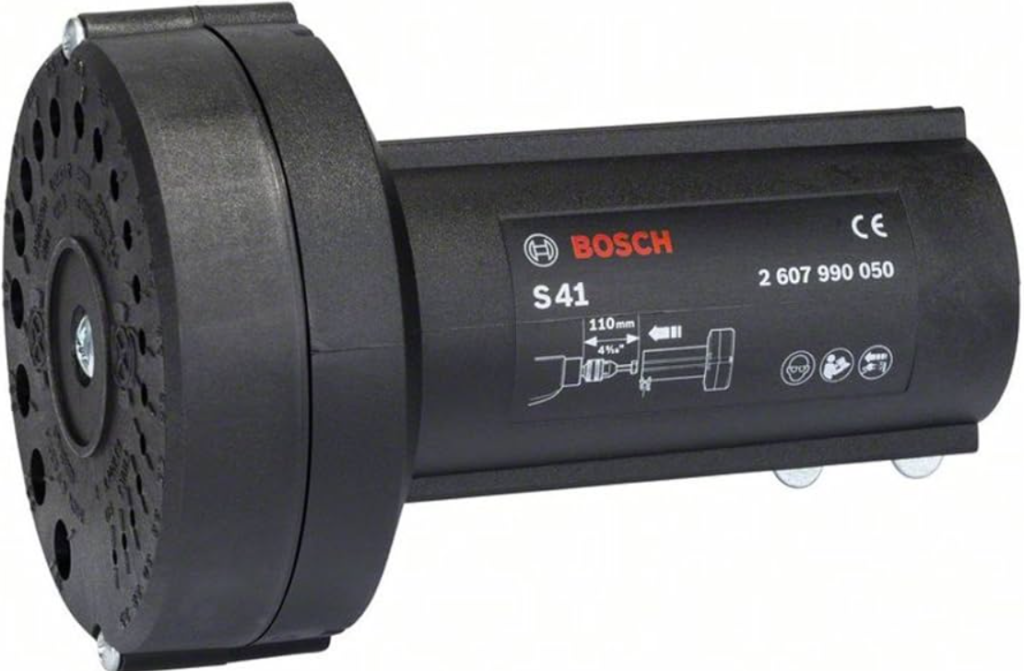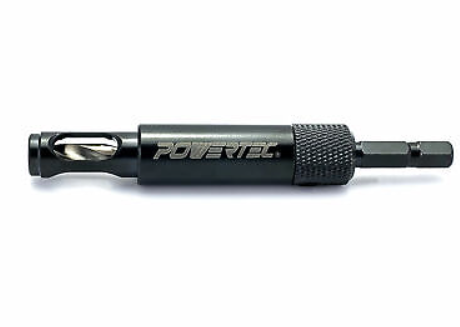It is essential to have a thorough understanding of the particular qualities of brick, which is a fundamental building material, before drilling. One of the most important factors in successfully drilling into brick is having a solid understanding of the material’s nature and selecting the suitable instruments.

Brick’s Characteristics :
- Clay that has been burnt in a kiln is typically used in its composition, which results in a material that is both durable and strong.
- Porosity can vary, which might have an impact on drilling procedures and the choice of tools.
- Drilling should be done with specialist instruments and methods because of the nature of the material, which is hard and dense.
Drilling into brick requires a set of essential tools.
Power drill:
- When drilling into brick, it is best to use a drill that has a variable speed and either a hammer or masonry function integrated into it.
- In most cases, corded drills offer more torque and more consistent power, making them an excellent choice for brick drilling.
Drill bits:
- Masonry or carbide-tipped drill bits that are intended exclusively for brick installation.
- Taking into account the size of the bit for the anchor or fastener that is intended.
Equipment for Safety:
It is important to use eye protection, gloves, and a dust mask while drilling in order to protect yourself from dust and debris.
Adjustable Accessories for Support:
- In order to secure fixtures to the brick surface that has been drilled, masonry anchors or screws are required.
- For the purpose of designating exact drilling locations on the brick, a level, a measuring tape, and a pencil are required.
- In order to drill into brick surfaces in a way that is both successful and safe, the first step is to acquire the knowledge necessary to comprehend the characteristics of brick and to equip oneself with the required tools.
2) Preparations and Precautions While Drilling into Bricks
In order to guarantee a successful and risk-free drilling operation, it is essential to meticulously prepare and follow to safety precautions prior to drilling into brick. This will protect not only the material being drilled but also the person who is executing the task.
Putting a Mark on the Brick Surface to Signal the Drilling Point
In order to precisely mark the drilling spot on the brick surface, you will need to make use of a measuring tape and a pencil.
Ensure that the placement of the fixtures is accurate in terms of alignment and levelness.
Masking tape should be used over the region that has been indicated in order to prevent the drill bit from sliding about when drilling.
Contributes to the reduction of chipping and safeguards the surface of the brick.
Drilling into brick requires taking certain precautions.
Personal Protective Equipment (often abbreviated as PPE): Wearing safety goggles will protect your eyes from the dust and debris that will be produced throughout the drilling process.
Use work gloves to protect your hands from sharp edges and to improve your grip on the object you are working with.
Dust Control Measures
During the drilling process, take precautions to avoid breathing in brick dust by donning a respirator or a dust mask.
Consider utilizing a dust extraction device or a vacuum in order to reduce the amount of particles that are airborne.
Working Space That Is Safe:
- For the purpose of ensuring a safe and unobstructed working environment, clear the immediate area surrounding the drilling place.
- For the purpose of preventing the brick from moving around while drilling, you can use clamps or vices to firmly keep it in place.
Maintaining Stability and a Balance:
For stability and balance, you should either stand on a surface that is stable or use a ladder that is positioned firmly.
Always keep a tight grip on the drill in order to regulate its movement and avoid any accidents that may occur.
Create an environment that is suitable to precise and safe drilling into brick by precisely marking the drilling point and sticking to safety procedures. This will ensure that both your personal safety and the integrity of the brick surface are protected.
3) Finding the Right Drill and Bits for Your Project
In order to successfully penetrate brick surfaces, it is essential to select the suitable drill and drill bits. In order to achieve precision and reduce the likelihood of causing damage to the brick material during the drilling process, it is important to choose the appropriate tools.
How to Determine Which Drill Is Best for The Brick ?
You should go with a drill that has a variable speed and a hammer or masonry function from a reputable manufacturer.
For brick drilling, corded drills are frequently selected because of their steady power and torque, making them suited for the task.
When you are drilling, you should look for features such as a side handle that will provide you with more control and stability.
When selecting drill bits, check to see if the chuck size of the drill is compatible with those bits.
Considerations to Make When Choosing Drill Bits for Brick
Drill Bits for Masonry :
- Make sure to use masonry drill bits that are intended exclusively for concrete or brick materials.
- When working with hard materials, you should think about using carbide-tipped drill bits, which are noted for their endurance and efficacy.
Bit Size and Type:
- Make sure that the bit size you choose is appropriate for the anchor or fastener that you intend to use.
- Define the difference between normal twist bits and hammer drill bits that are specifically designed for use with masonry.
Impact-Resistant Bits:
You should choose for bits that are impact-resistant or have tungsten carbide tips because they are able to endure the hardness of brick without becoming dull very quickly.
Regarding the Bit Coating and Quality:
- If you want your bits to last longer, look for ones that have surface coatings such as diamond-ground carbide or titanium nitride (TiN).
- Make an investment in high-quality bits to guarantee drilling results that are clean and accurate.
Complementary Items and Helping Instruments
Accessories for Support
- When it comes to attaching fixtures, you should use masonry anchors or screws that are appropriate with the drill bit size that you have chosen.
A pencil, a level, and a measuring tape are required in order to accurately mark and align the drilling points before drilling. - In order to ensure efficient and precise drilling into brick, it is necessary to select a drill that is acceptable and has the relevant features. Additionally, it is important to pair the drill with the appropriate masonry drill bits. This will minimize the danger of damage to both the material and the drilling equipment.
Recommended :
Can we Drill a hole in Resin without cracking and breaking it ?
Is it Possible to Drill a hole in a glass without breaking it ?
Most common mistakes to avoid while drilling through a steel beam
Step by Step procedure to drill a hole in a granite
4) Instructions and Techniques for Drilling Into Brick Techniques
For the purpose of creating holes in brick surfaces that are accurate, clean, and secure, it is vital to execute the appropriate drilling techniques. By utilizing the appropriate strategies and procedures, it is possible to achieve successful penetration without jeopardizing the structural characteristics of the brick material.
Pre-Drilling Procedures and the Formation of the Pilot Hole
The Preparation of the Pilot Hole:
- To get started, use a pencil or a marker to make a precise mark on the drilling point.
- In order to construct a pilot hole, you need begin drilling with a masonry bit of a significantly lower size.
Take into consideration both depth and angle:
Determine the needed drilling depth by calculating the length of the anchor or fastener and using that information.
When drilling, it is important to keep a perpendicular angle in order to produce holes that are straight and accurate.
Taking a Slow and Steady Approach to Drilling
Adjusting the Speed to a Low:
Set the speed of the drill to a low setting to avoid the tool overheating and to reduce vibration as much as possible.
Avoid traveling at high speeds, since this could result in an excessive amount of heat and possibly cause damage to the brick.
Application of Pressure That Is Balanced:
In order to progressively penetrate the brick, it is necessary to provide steady and mild pressure to the drill.
Please refrain from applying excessive force to the drill bit, as this may result in the brick becoming chipped or cracked.
Drilling and cleaning conducted at regular intervals:
At regular intervals, remove the drill bit from the hole in order to clear away any dust or debris that has formed there.
In order to keep the bit from overheating and to keep control of the situation, continue drilling at small intervals continuously.
Techniques to Use in Lubrication and Cooling
The application of lubricants:
The drill bit and the region that is being drilled should both be lubricated with a lubricant, such as cutting oil or water.
Lubricants are able to reduce friction, distribute heat, and make sure that the drilling process goes more smoothly into the brick.
Intervals for Cooling:
It is important to take short breaks when drilling in order to prevent the bit from overheating and to allow it to cool down.
The use of a cooler bit not only increases the effectiveness of cutting but also extends the life of the drill bit.
Adjustments Made After Drilling to Ensure Accuracy
Elimination of Debris:
- Following the completion of the drilling process, the debris and dust should be removed from the hole by using a vacuum or by blowing softly.
- The anchor or fastener will have a better chance of fitting properly if the hole is clean.
All adjustments and final inspections :
- Ensure that the hole that was drilled is accurate, that it is deep, and that it is clean.
- It is vital to make any necessary changes or clean up in order to guarantee that the fixtures are aligned and fitted correctly.
If you follow these drilling procedures with great care, you will be able to create holes in brick surfaces that are clean, accurate, and secure. This will make it possible for you to successfully install anchors, fasteners, or fittings without affecting the structural integrity of the brick.
5) Cracks and damage prevention
Drilling brick surfaces requires precise execution in order to prevent cracks or damage, which is necessary in order to preserve the structural integrity of the brick surfaces. Through the implementation of preventative measures, it is possible to guarantee that the drilling process will be successfully completed without compromising the brick material’s strength or aesthetics.
Drilling Methods That Are Appropriate for the Prevention of Cracks
Take precautions to avoid high impact or force:
- During the drilling process, it is important to avoid applying excessive pressure or hammering action, since this could result in bricks chipping or breaking.
- To avoid putting an excessive amount of strain on the material, it is important to drill at a steady and controlled rate.
Size of the Drill Bit
- In order to avoid oversizing the hole, it is important to use the drill bit that corresponds to the size of the anchor or fastener that you intend to use.
- A hole that is precisely sized reduces the amount of stress concentration and the likelihood of cracks occurring.
The Strategic Positioning and Depth of the Holes
Placement of the Hole with Caution:
- When drawing and placing holes, make sure to be exact and avoid placing them in close proximity to the edges or corners of the brick, which are prone to cracking.
- Keep a safe distance from mortar joints in order to prevent the joints from becoming weaker and the bricks from being damaged as a result.
A controlled drilling depth:
In order to avoid putting the brick under unnecessary stress, it is important to drill to the needed depth without going deeper than that.
You can either use tape as a depth guide or measure the appropriate depth and mark it on the drill bit you are using.
Providing Assistance with the Drilling Process
Backing Support or Anchoring:
- In order to minimize blowout or chipping, it is recommended that a backing material or support be utilized behind the brick surface.
- As the brick is being drilled, it is important to make use of a backing board or a material that serves as a sacrifice.
It is important to manage dust and debris with caution.
- Maintaining a clean and regulated environment during drilling requires that dust and debris be removed from the hole on a regular basis using a vacuum cleaner.
- It is important to try to prevent the collection of debris that could lead to stress concentrations and friction.
Checks and Refinements Made After the Drilling Process
The process of cleaning and finishing:
- In order to provide a smooth and clean surface, it is important to thoroughly clean drilled holes in order to remove any remaining dust or debris.
- Sandpaper with a fine grit should be used to smooth off any rough edges or protrusions in order to achieve a polished surface.
Assessment and modifications:
- Be sure to look for any signs of tension, cracks, or inconsistencies in the holes that have been drilled.
- To ensure that the installation is both secure and flawless, it is vital to make any necessary tweaks or refinements.
You may considerably limit the possibility of cracks or damage to the surface of the brick by applying these preventative measures and rigorous procedures. This will ensure that the drilling process is effective without compromising the structural integrity of the material.
6) Avoiding the Most Common Errors When Drilling Into Brick
It is essential to steer clear of the typical mistakes that are made throughout the drilling process in order to guarantee a smooth and successful operation while also protecting the brick material with its integrity. Recognizing and avoiding these errors can drastically improve the outcome of the drilling process and prevent any potential damage from occurring.
Neglecting to Take Precautions for Safety
Putting off the use of personal protective equipment (PPE):
- Mistake: Ignoring the importance of wearing protective gear such as goggles, gloves, and masks can result in injuries or the risk of health concerns.
- Put on the required personal protective equipment (PPE) at all times to protect yourself from dust, debris, and the possibility of accidents.
Workspace Without Security :
- By failing to properly secure the brick or by creating an unstable working environment, you run the risk of causing accidents or damage to the brick.
- Before beginning the drilling process, make sure the block is securely fastened and that the working environment is steady and devoid of debris.
Erroneous selection of the drill and bit
Use of Tools That Are Not Appropriate:
It is possible to cause damage or inefficient drilling by using a drill or drill bits that are not designed for use with brickwork.
The solution is to select a drill of superior quality that is equipped with the necessary features and masonry drill bits that are specifically designed for use with the drill.
Inappropriate Bit Size:
When you use a drill bit that is not the appropriate size, you run the risk of creating holes that are either too big or too little, which can make it difficult for anchors or fasteners to fit properly.
For accurate drilling, the solution is to choose the appropriate bit size that corresponds to the anchor or fastener that you intend to use.
Techniques of Drilling That Are Not Reliable
Excessive force or speed:
- An error that can lead to cracks or damage to the material is the application of excessive pressure or high-speed drilling, both of which can cause overheating.
- To solve this problem, drill at a consistent pace while maintaining a controlled pressure, and steer clear of high-speed settings.
Lack of cooling or lubrication:
- When drilling without the use of lubricants or cooling agents, there is a possibility that the drill bit or brick will be damaged due to increased friction, overheating, and other potential issues.
- The solution is to maintain a consistent application of lubricants or coolants in order to reduce friction and dissipate heat.
Having a Hurrying Approach to the Procedure
Approach to Drilling That Is Hasty:
- By rushing through the drilling process without taking periodic breaks or giving careful consideration, you run the risk of creating holes that are not exact and causing possible damage.
- For precise and controlled drilling, the solution is to take your time, drill at intervals, and rest so that debris may be cleaned up.
Failure to Perform Post-Drilling Inspection:
- Neglecting to inspect drilled holes for cleanliness, depth, or abnormalities can be a mistake that can impair the quality of the installation.
- If you want to install anchors or fixtures, you should first perform a complete inspection of the holes, clean them, and make any required adjustments.
Post-Drilling Measures That Are Not Appropriate
Ignoring the Need to Clean Up and Finish Anything:
- There is a possibility that the fitting of anchors or the overall aesthetics will be negatively impacted if the drilled holes are not cleaned or their edges are not refined.
- To achieve the best possible results and a polished appearance, the solution is to clean and smooth the holes that have been drilled.
Skipping the Final Assessments:
- It is possible that the stability of the fittings will be impaired if the holes are not checked for potential cracks or defects before they are installed.
- The solution is to examine the holes to determine whether there are any problems and then make any necessary adjustments to ensure a secure installation.
It is possible to considerably decrease the danger of damage and ensure a successful and effective drilling operation into brick surfaces by avoiding these typical blunders, which may be avoided by adopting cautious practices and following suitable procedures.
7) Finishing and cleaning up after drilling into brick
In order to finish the drilling process, it is not enough to simply create holes; it is also necessary to carefully clean and refine the areas that have been drilled. Not only does using the appropriate finishing and cleaning techniques improve the looks, but it also guarantees the functionality and longevity of the anchors or fixtures that have been installed.
Clearing of Debris and Dust
Disposal of Remaining Debris:
- When you want to remove dust and dirt from the holes, you can either use a brush or a vacuum cleaner.
- In order to ensure a secure fit for anchors or fasteners, it is imperative that each and every hole be meticulously cleaned.
Wiping the surface:
- To remove any dust or residue that may still be present, use a moist cloth to wipe the surface of the brick surrounding the holes that have been drilled.
- It is possible to achieve a clean and consistent appearance with the help of this procedure.
Making Rough Edges Smoother
Enhancing the Appearance of Drilled Holes:
Using sandpaper with a fine grain, carefully sand the edges of the holes that have been drilled.
It is important to smooth rough edges in order to minimize abrasions and to ensure that installed fixtures have a snug fit.
Deburring the Holes:
- For the purpose of ensuring a flush surface for the installation of the fixture, remove any burrs or protrusions that may be present along the borders of the holes.
- The completion of this phase helps to an appearance that is uniform and professional. Final Checks and Adjustments to Be Made
An Examination of the Drilled Holes’ Quality:
- It is important to check the cleanliness, depth, and regularity of each hole that has been drilled.
- It is imperative that any inconsistencies or flaws that were discovered during the examination be addressed.
Adjustment and alignment:
- Check that the holes that were drilled are aligned and positioned appropriately so that they may be used with the fixture that was intended for them.
- It is important to make any necessary changes or enhancements before moving forward with the installation of the device.
Finishing touches for a professional appearance
Measures to Prevent the Formation of Dust:
- In order to prevent dust accumulation or degradation over time, it is recommended that a coat of clear sealer or paint be applied around the area that has been drilled.
- Sealing the region that has been drilled not only extends the lifespan of the brick surface but also helps to preserve its aesthetic attributes.
Considerations to Make When Installing Fixtures:
- The fittings or anchors should be prepared for installation by ensuring that they are in accordance with the size and requirements of the holes that have been drilled.
- It is recommended that the installation process be continued once the sections that have been drilled have been completely cleaned, smoothed, and inspected.
Conclusion :
It is possible to achieve a polished and professional result by performing comprehensive cleaning and finishing procedures after drilling into brick surfaces. By giving cleanliness a high priority, smoothing rough edges, and completing final inspections, you not only add to the aesthetic appeal of the brick, but you also contribute to the stability and longevity of the fixtures that are mounted on the brick.
Paying Attention to Specifics Is Very Important
For drilling into brick surfaces to be successful, it is not enough to simply create holes; one must also ensure that the holes are precise in their alignment, that they are of the appropriate size, and that they preserve the brick’s structural integrity. The achievement of precision and functionality is dependent on each and every step, beginning with the act of marking the drilling point and ending with the finishing touches.
Accomplishing a Professional Outcome
It is possible to achieve a drilling process that is clean, accurate, and secure into brick surfaces if one follows the methods that have been outlined with great attention to detail. Not only does this accomplish the installation of fixtures or anchors successfully, but it also results in a final product that is both aesthetically pleasing and structurally sound.



